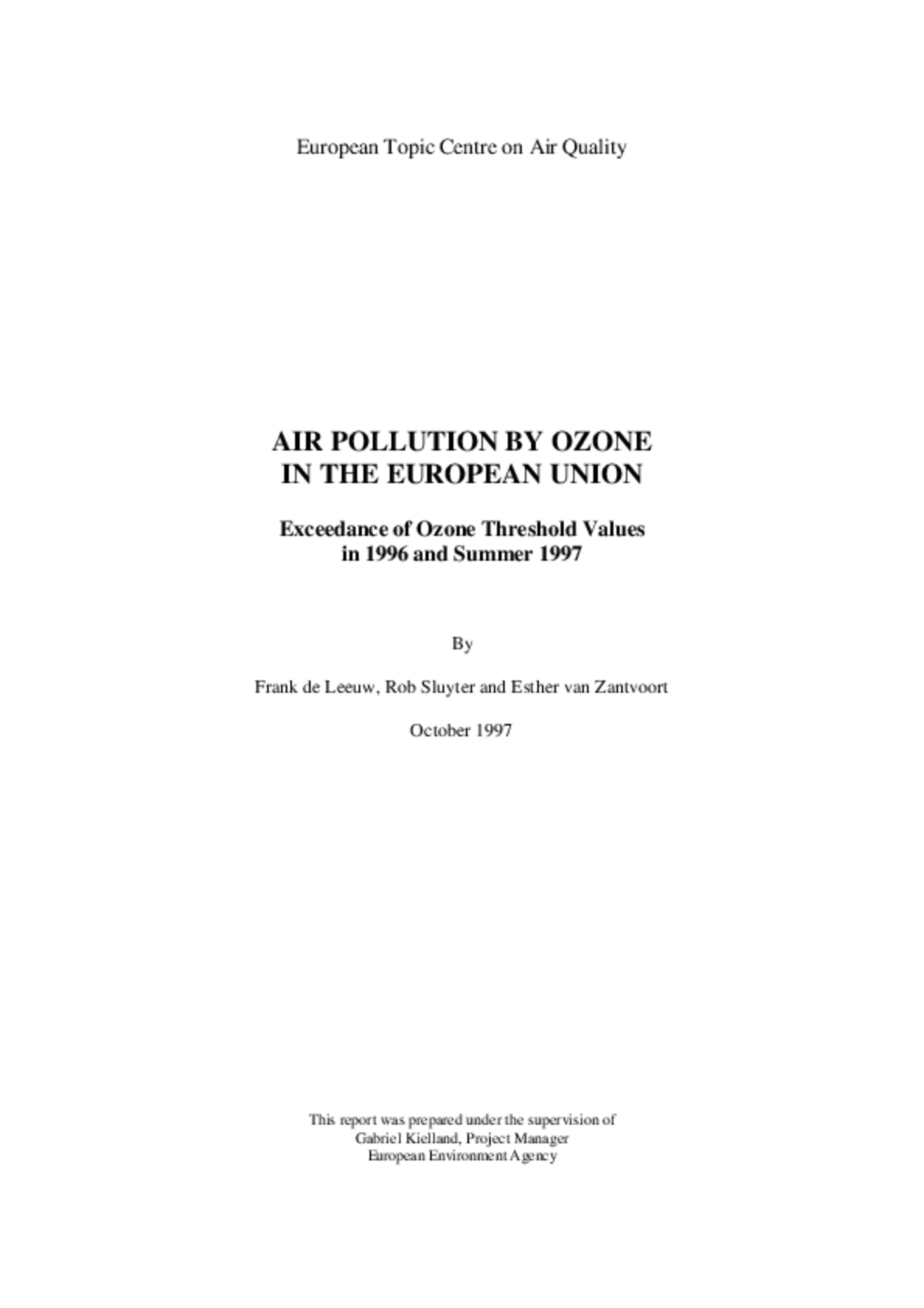All official European Union website addresses are in the europa.eu domain.
See all EU institutions and bodiesAn official website of the European Union | How do you know?
Environmental information systems
Topic report 7/1997
AIR POLLUTION BY OZONE IN THE EUROPEAN UNIO Exceedance of Ozone Threshold Values in 1996 and Summer 1997
Report (PDF)

AIR POLLUTION BY OZONE IN THE EUROPEAN UNIO Exceedance of Ozone Threshold Values in 1996 and Summer 1997
Topic report 7/1997
21 Jul 1999
